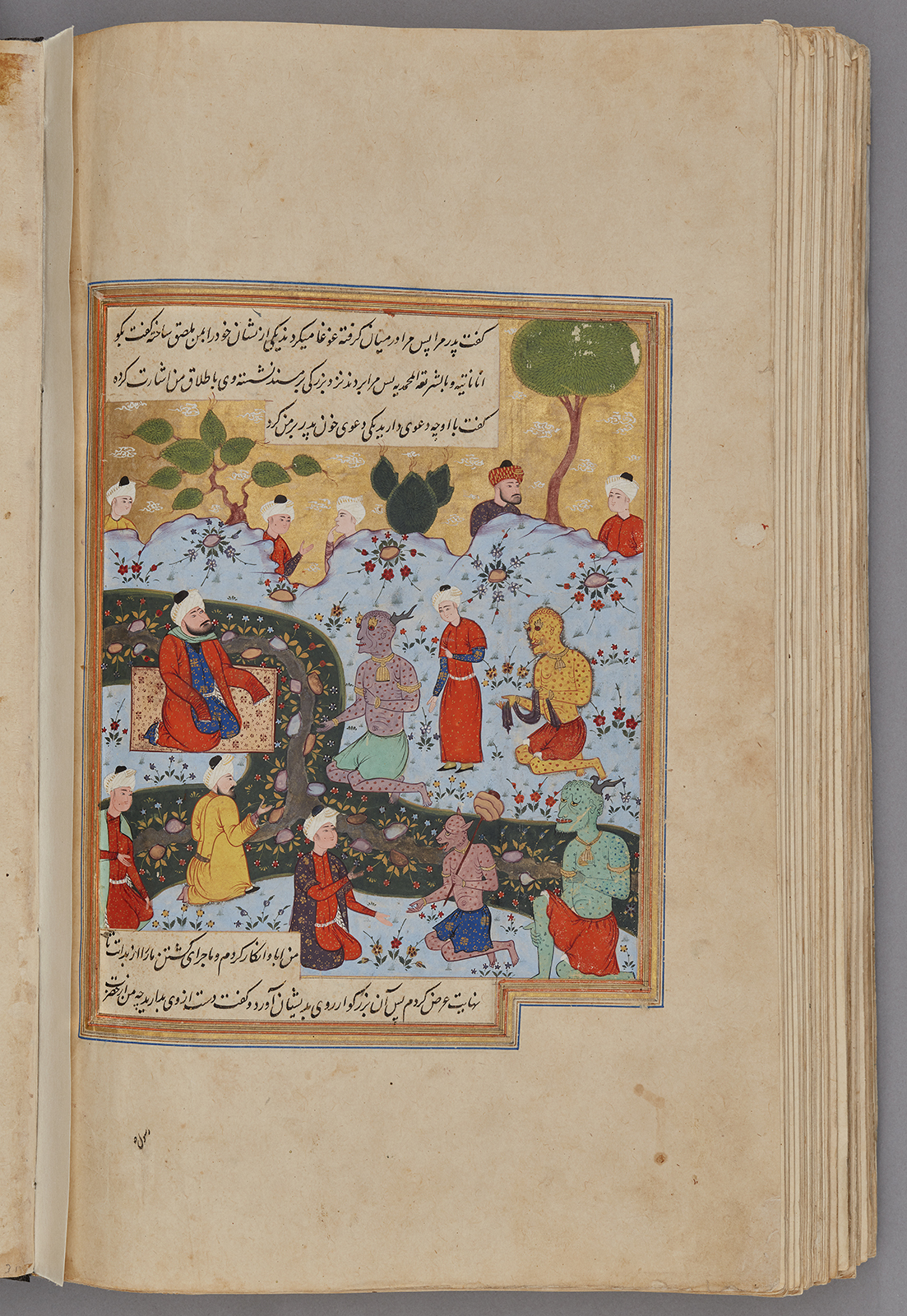Click on the image to zoom
Punishment for the death of a snake, Folio from a manuscript of Nigaristan
- Accession Number:AKM272.f309v
- Creator:Author: Ahmad b. Muhammad Ghaffari, Persian, died 1567 Scribe: Ahmad al-Shirazi
- Place:Iran, Shiraz (probably)
- Dimensions:38.7 cm × 25 cm × 6.4 cm
- Date:1573-74 CE/980 AH/AH 980
- Materials and Technique:Ink, opaque watercolour, and gold on paper
The miniature painting "Punishment for the death of a snake" is from an intact manuscript of Kitab-i Nigaristan, a collection of anecdotes and historical incidents written in prose by the historian and scholar Ahmad Muhammad Ghaffari (1504–1567/68) of Kashan in 1551–2. This illustrated manuscript, dated 1573, was probably produced in a Shiraz workshop.
See AKM272 for more information about the manuscript and links to the other illustrations.
Further Reading
The outdoor scene illustrates several people and figures resembling demons sitting on a meadow next to a river. The river flows from the top left to the bottom and branches off to the right and left in its course. On the left, a bearded man, larger in his proportions than the other human figures, sits on what may be an island. On the opposite side of the river sits a particularly large grey demon. Three other men and demons are dispersed over the area along the river. Men and demons seem to be in conversation, because they are facing each other and all figures are gesturing. As well, both humans and demons are kneeling on the ground except one man, who is standing behind a demon. Behind the hill, where the horizon begins, are men who can only be seen up to the chest. They observe what is happening. A golden sky decorates the image.
The text conveys a description of a pilgrim’s journey from Egypt to Mecca. On his way he sees a snake that frightens many people. When he kills the snake and begins to resume his journey, the pilgrim suddenly finds himself surrounded by evil beings. The pilgrim is then accused of committing a great sin.
Outdoor scenes like this are among the major types of scenes depicted in miniature painting. In these scenes, a landscape dominates the image. This landscape could be a depiction of a garden with flowers and trees, or a lively natural setting with rocks and a rough landscape, depending on the context of the illustration. The figures are mostly subordinate to this setting.
- Elika Palenzona-Djalili
References
Sims, Eleanor. Peerless Images: Persian Painting and Its Sources. New Haven and London: Yale University Press, 2002. ISBN: 9780300090383
Note: This online resource is reviewed and updated on an ongoing basis. We are committed to improving this information and will revise and update knowledge about this object as it becomes available.


